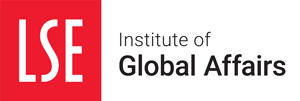GLOBAL POLICY LAB

Overview proposals
Re-focus on governance capacity and human capital, as foundations for a stronger investment climate.
Build effective country platforms to mobilize all development partners to unlock investments, and maximize their contributions as a group, including by convergence around core standards.
Implement regional platforms to facilitate transformational cross-border investments and connectivity.
Reduce and diversify risk on a system-wide basis to mobilize significantly greater private investment, including portfolio-based infrastructure financing.
Proposal 4a:
Shift the basic business model of the MDBs from direct lending towards risk mitigation aimed at mobilizing private capital.
Proposal 4b:
Develop system-wide political risk insurance and expand use of private reinsurance markets. Proposal
Proposal 4c:
Build a developing country infrastructure asset class with the scale and diversification needed to draw in institutional investors.
Right-size’ capital requirements for MDBs and other investors in infrastructure, given their default experience.
Proposal 5a:
Establish tailor-made capital and liquidity frameworks for the MDBs.
Proposal 5b:
Review the regulatory treatment of infrastructure investment by institutional investors.
Strengthen joint capacity to tackle he challenges of the global commons.
Proposal 6a:
Integrate activities in support of the global commons into the IFIs’ core programs, and coordinate them within country platforms.
Proposal 6b:
Create global platforms with the UN guardian agency and the World Bank coordinating and leveraging on the key players in each of the commons.
Integrate trust fund activities into MDBs’ core operations to avoid fragmentation.
Plug shortfalls in data and research that hamper effective policymaking, especially in developing countries.
Leverage more systematically on the ideas and operating networks of business alliances, NGOs and philanthropies.
The IFI community should strengthen and accelerate efforts to help countries develop deep, resilient and inclusive domestic financial markets.
TheIMF’s framework of policy guidance should enable countries to move toward the long-run goal of openness to capital flows and to better manage the risks to financial stability.
Proposal 11a:
Develop evidencebased policy options to enable countries to benefit from capital flows while maintaining financial stability, and to provide assurance to the markets that measures taken are appropriate.
Proposal 11b:
Develop an understanding of policy options that enable sending countries to meet domestic objectives while avoiding large adverse international spillovers.
Integrate the surveillance efforts of the IMF, FSB and BIS in a coherent global risk map, while preserving the independence of each of the three institutions’ perspectives
Proposal 12a:
Incorporate non-official and contrarian views systematically for more robust risk surveillance.
Build on the IMF-FSB Early Warning Exercise (EWE) to ensure policy follow-up from the global risk map.

Stitch together the various layers of the GFSN to achieve scale and predictability.
Establish a standing IMF liquidity facility to give countries timely access to temporary support during global liquidity shocks.
Proposal 15a:
Use a country’s qualification for the IMF’s liquidity facility in considering the activation of RFA support.
Enable the IMF to rapidly mobilize additional resources in large and severe global crises.
The G20 should refocus on a multi-year, strategic agenda, rationalize workstreams, and devolve more work to the IFIs.
A G20-led group, with representation from key non-G20 constituencies and the IFIs, should steer the reorientation of development finance over the next three years before handing the coordinating role to the IFI Heads. This should include building complementarity among all development partners, and a clear system of metrics to track impact and value for money
A biennial strategic forum convened by the IMFC and DC should identify development risks before they manifest, and the required collective responses.
The Executive Board of each IFI should focus on strategic priorities for the institution and advancing systemwide goals.
Adopt a practical, risk-based approach to delegate greater responsibility to IFI Management, and hold them accountable for outcomes.
Ensure diversity and better match the skills available to IFI Boards and Management to the shift in the business models and increased complexity of challenges.
Integrate trust fund activities into MDBs’ core operations to avoid fragmentation.
Plug shortfalls in data and research that hamper effective policymaking, especially in developing countries.
Leverage more systematically on the ideas and operating networks of business alliances, NGOs and philanthropies.
The IFI community should strengthen and accelerate efforts to help countries develop deep, resilient and inclusive domestic financial markets.
TheIMF’s framework of policy guidance should enable countries to move toward the long-run goal of openness to capital flows and to better manage the risks to financial stability.
Proposal 11a:
Develop evidencebased policy options to enable countries to benefit from capital flows while maintaining financial stability, and to provide assurance to the markets that measures taken are appropriate.
Proposal 11b:
Develop an understanding of policy options that enable sending countries to meet domestic objectives while avoiding large adverse international spillovers.

Integrate the surveillance efforts of the IMF, FSB and BIS in a coherent global risk map, while preserving the independence of each of the three institutions’ perspectives
Proposal 12a:
Incorporate non-official and contrarian views systematically for more robust risk surveillance.
Build on the IMF-FSB Early Warning Exercise (EWE) to ensure policy follow-up from the global risk map.
Stitch together the various layers of the GFSN to achieve scale and predictability.
Establish a standing IMF liquidity facility to give countries timely access to temporary support during global liquidity shocks.
Proposal 15a:
Use a country’s qualification for the IMF’s liquidity facility in considering the activation of RFA support.
Enable the IMF to rapidly mobilize additional resources in large and severe global crises.
The G20 should refocus on a multi-year, strategic agenda, rationalize workstreams, and devolve more work to the IFIs.
A G20-led group, with representation from key non-G20 constituencies and the IFIs, should steer the reorientation of development finance over the next three years before handing the coordinating role to the IFI Heads. This should include building complementarity among all development partners, and a clear system of metrics to track impact and value for money
A biennial strategic forum convened by the IMFC and DC should identify development risks before they manifest, and the required collective responses.
The Executive Board of each IFI should focus on strategic priorities for the institution and advancing systemwide goals.
Adopt a practical, risk-based approach to delegate greater responsibility to IFI Management, and hold them accountable for outcomes.
Ensure diversity and better match the skills available to IFI Boards and Management to the shift in the business models and increased complexity of challenges.